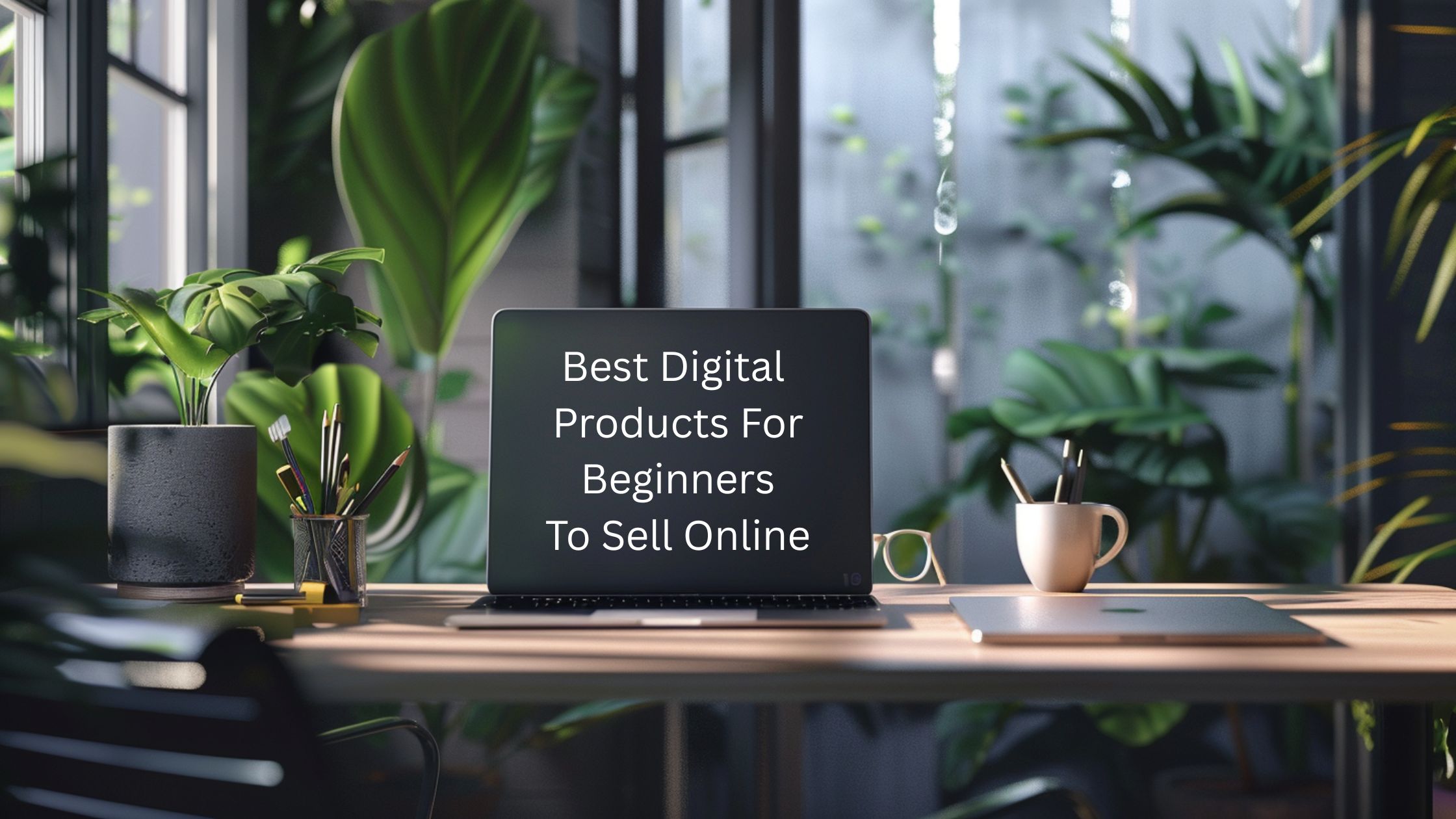Best Digital Products For Beginners To Sell Online
Selling digital products online is a game-changer for many beginners looking to enter the world of e-commerce. It’s like suddenly finding yourself on a new planet where startup costs are low and potential returns are high. The digital space is bustling with opportunities just waiting to be tapped.
What makes digital products stand out, you ask? Well, unlike physical products, they don’t need storage, there are no shipping hassles, and they can be sold over and over without additional costs. Imagine creating something once and selling it infinitely! Sounds like a sweet deal, right?
Now, you might be wondering if it’s only for tech-savvy folks or those with a ton of experience. Here’s the scoop: absolutely not! Beginners can totally jump into the digital market. It’s all about finding what you’re good at, researching your audience, and choosing the right platform to showcase your stuff.
In today’s fast-paced digital age, customer demand for digital products is at an all-time high. Everyone’s looking for convenience and instant access—two things that digital products deliver seamlessly. From students seeking learning materials to professionals scouting for tools to streamline their work, the market is ripe for newcomers.
Getting started might seem daunting, but with the right mindset and a bit of strategic thinking, anyone can carve out a niche in this vibrant market. Think of it as stepping into a new world of possibilities, where your creativity and knowledge can transform into profitable assets.
E-books: Gateway to Sharing Knowledge
E-books offer an incredible opportunity for beginners to get their feet wet in the digital market. They’re like the bread and butter of digital products—simplicity at its finest. Whether you’re a passionate cook, a history buff, or have a knack for storytelling, e-books let you share your knowledge with the world in a compelling, accessible format.
The beauty of e-books is their versatility. Craft a ‘how-to’ guide, compile a collection of tips, or dive into fiction or non-fiction storytelling. Got a unique perspective or expertise? There’s an audience out there eager to learn from you. Plus, the process of writing an e-book can help clarify your thoughts and enhance your knowledge on the topic you’re passionate about.
Publishing e-books has never been easier, even for complete beginners. Platforms like Amazon Kindle Direct Publishing and Barnes & Noble Press provide straightforward processes to get your work out there. These platforms handle distribution, making it easy to reach a global audience without needing to be a marketing guru. And, let’s be honest, who wouldn’t want the thought of earning money while they sleep?
Beginners shouldn’t feel daunted by the thought of e-book creation. It all starts with researching what people are interested in and aligning it with your own passions and expertise. Tools like Scrivener or Google Docs can assist in the writing process, while Canva can help with designing an attractive cover.
Above all, consistency and dedication in the writing process are your best friends. It’s not about speed, but rather creating valuable content that resonates with readers. In the world of e-books, quality trumps quantity every time. With patience and perseverance, even a first-time author can see their e-book rise in the digital marketplace.
Online Courses: Harnessing and Sharing Expertise
Online courses are like the rock stars of digital products, commanding attention and delivering value all over the world. With the unstoppable growth in online education, creating and selling courses is a golden opportunity for beginners who have something to share.
You’ve got expertise or skills in something, right? Whether it’s photography, cooking, or even online marketing, people out there want to learn from real experiences and practical knowledge. And that’s where you come in, turning your know-how into structured, digestible course material.
Crafting an online course may sound intimidating, but it’s easier when broken down step-by-step. Start by outlining your course content, jotting down key points you want to cover. Break these into modules or lessons, turning complex ideas into simpler, engaging learning experiences. Using video, slides, or even written content can cater to different learning styles.
Platforms like Udemy and Teachable have lowered the barriers significantly for beginners. These sites provide user-friendly tools, enabling you to focus on creating content rather than stressing about technicalities or marketing. Plus, once your course is live, they help connect you with your target audience—people who are actively searching for courses.
Early feedback is crucial. Share drafts or sections with a small group to gather insights and tweak where necessary. This will refine your content and ensure you’re delivering just what your audience needs.
Remember, it’s about quality and engagement. An engaging course keeps learners interested and coming back for more, which can lead to better reviews and more sales. If you’ve got a passion and a drive to teach, creating online courses can be both rewarding and lucrative.
Printables: Creativity Meets Practicality
Printables are like little bursts of creativity that can also be super practical. For beginners, they’re a fantastic entry point into the world of digital sales. Imagine creating something fun and useful that others can download and use instantly—that’s what printables are all about.
You’ve probably noticed how popular planners, worksheets, and templates have become. From meal planners to budget trackers, or even motivational wall art, printables cover a wide range of categories and appeal to diverse audiences. If you’ve got a flair for design or organization, printables could be your jam.
Getting started with printables doesn’t require advanced design skills or fancy software. Tools like Canva and Adobe Spark are user-friendly and provide tons of templates to kickstart your creative journey. Plus, they’re pretty intuitive, meaning you can craft visually striking printables without being a design whiz.
One cool thing about printables is their cost-effectiveness—no inventory, no shipping. Just create, upload, and let folks print at their convenience. Platforms like Etsy and Gumroad make it easy to set up shop and reach potential customers. They handle transactions, so you can focus on creating more.
It’s smart to keep an eye on trends when crafting your printables. This helps ensure your offerings stay relevant and attract interest. Knowing what people are searching for means you can tailor your products to meet demand right now.
Don’t underestimate the power of social media for promoting your printables. Sharing your designs on platforms like Instagram or Pinterest can attract a following and drive traffic to your online store. With persistence and a bit of creativity, printables can turn into a profitable side hustle or even a full-blown business.
Stock Photos: Capturing Moments for a Living
Stock photos are everywhere these days, filling in the visual gaps for blogs, websites, and marketing materials. For beginners with a passion for photography, this market is teeming with opportunities. It’s like turning your photo hobby into a money-making gig without needing a professional studio setup.
Starting out in the stock photo world doesn’t mean you need the latest high-end camera. Decent gear does help, but creativity and understanding what sells are more important. Focus on quality and diversity in your photos—think versatile themes, varied subjects, and even different seasons or moods.
Platforms like Shutterstock and Adobe Stock are great places to showcase your work. These sites welcome photographers at any experience level and handle licensing, making it easier for you to earn from your uploads. Just be sure your images meet their technical requirements to get approved.
Taking stock photos you’d buy is a good rule of thumb. What catches people’s eyes? Clear, vibrant images that tell a story or add value to content. Everyday scenes, from office shots to nature photos and lifestyle moments, often find eager buyers.
You can also tap into trends by keeping an eye on popular search terms within these platforms. This gives you insights into what buyers are looking for, helping you tailor your shoots to meet market demand. With consistency, your portfolio will grow, and so will your earning potential.
Stock photography is a bit of a numbers game—the more high-quality images you have available, the more potential there is for sales. So get clicking, and start building your stock photo collection.
Digital Art and Design Products: Turning Passion into Profit
Digital art and design products are gaining momentum as people look to personalize their spaces and projects. If you’re a creative soul with a knack for drawing or design, this area might just be your perfect canvas.
Getting started in digital art doesn’t require fancy equipment—just a tablet, some apps, and your creativity. Programs like Procreate and Adobe Illustrator offer powerful tools to bring your artistic visions to life without a steep learning curve.
Etsy and Creative Market are hot spots for digital products like art prints, clipart, and design templates. They make it easy for artists to reach a large audience and showcase their unique style. The key is developing a distinct brand and aesthetic that sets your work apart.
Staying current with design trends ensures that your offerings remain fresh and in demand. Whether it’s bohemian patterns, minimalist aesthetics, or retro vibes, tapping into these can boost the appeal of your products.
Print-on-demand services can also extend your reach. These services let customers enjoy your designs on items like mugs, T-shirts, and phone cases without you dealing with production hassles. It’s a win-win, expanding the ways people can enjoy your art.
Building a loyal audience through social media allows you to share your creative journey and engage with your customers directly. Platforms like Instagram allow showcasing your art, while communities on Reddit or Discord can provide valuable feedback and support.
Digital art is not just about showcasing talent but also about turning art into products that people love. With persistence and passion, turning your creative flair into a profitable venture is within reach.





